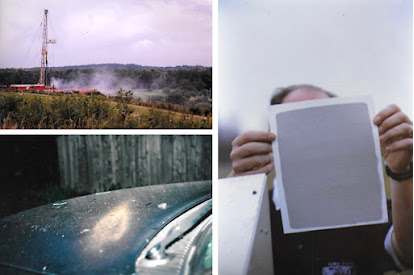PA DEP Records Show at Least 161 Water Supplies Damaged by Drilling
May 19, 0201Vibroacoustic disease: the need for a new attitude towards noise
December 19, 1999Naturally Occurring Radioactive Materials (NORM) in Produced Water and Oil-Field Equipment— An Issue for the Energy Industry
Introduction
Naturally occurring radioactive elements such as uranium, radium, and radon are dissolved in very low concentrations during normal reactions between water and rock or soil. Ground water that coexists with deposits of oil can have unusually high concentrations of dissolved constituents that build up during prolonged periods of water/rock contact. Many oil-field waters are particularly rich in chloride, and this enhances the solubility of other elements including the radioactive element radium. Some of this saline, radium-bearing water is unavoidably brought to the Earth’s surface with the oil and must be separated and then disposed, usually by return to depth in an injection well. At some oil-field sites the pipes and tanks that handle large volumes of this “produced water” can become coated with scale deposits that contain radium. Radium bearing scale is the type of “diffuse NORM waste” that occurs in the oil industry. Radium accumulation in oil-field equipment in the United States first became apparent in the 1980’s when scrap metal dealers began to routinely detect unacceptable levels of radioactivity in shipments of oil-field pipe. Since that time the oil and gas industry has sought to better define the extent of the oilfield NORM problem, and to develop techniques for the prediction, prevention, remediation, and disposal of oil-field NORM. In parallel efforts, State and Federal regulatory agencies have worked to develop guidelines for the control of NORM that will adequately protect public health and the environment. This report summarizes current understanding of the composition and mode of occurrence of oil-field NORM in the United States, briefly reviews the status of NORM regulations, and identifies some health and environmental issues associated with oil-field NORM.



